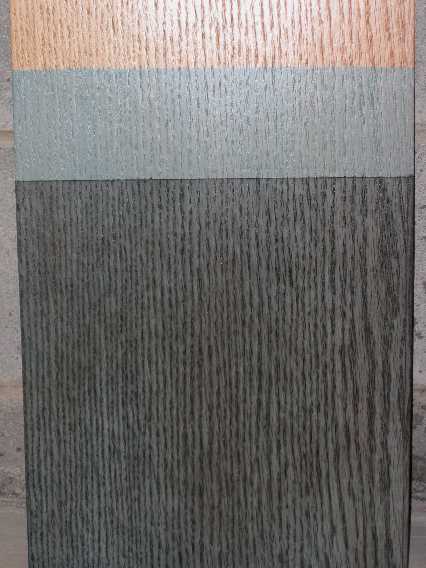Achieving Consistent Color on Large Jobs
It can be tricky to keep color consistent on a large area of wall paneling. Here, finishers discuss the approaches that work. February 13, 2006
Question
Iím desperate to find out how to achieve consistent color over a large job with 3000 sq ft of wall paneling. This is our current process:
Sand to 150
Wiping Stain (Sherwin Williams WS Concentrates)
Vinyl Sealer
Toner coat
Top Coat
We are having a huge problem keeping the color consistent.
Forum Responses
(Finishing Forum)
From Paul Snyder, forum technical advisor:
Every step in the process is critical to maintaining consistent color. The sanding has to be uniform on every piece. The same grit, pressure, and speed are all important not to mention making sure the sandpaper is always fresh and not worn. How the stain is applied, how long it sits before it's wiped, and how it's wiped all affect the color it produces.
Mixing the toner to the same concentration every time along with how it's sprayed (e.g., how wet each pass is as well as overlapping) make a difference in how it looks. Little variations in any of the steps will produce different results. It's hard enough to get one person to be consistent, but it's multiplied when more than one person is involved. You need to have very regimented standards for every step in the process as well as color boards that show what each step is supposed to look like.
From contributor B:
You didn't mention what wood you're using or how dark your color has to be. I'd suggest working with your lacquer supplier's color matcher to come up with a spray stain. Since your finisher is already using shading lacquer and is presumably getting even coverage, a spray stain will be easy enough to work with. That way, the final color will not be so dependant on the white wood sanding. Make a control step panel to match to and make sure the finisher uses it.
From contributor C:
All of the above is correct but my approach would be to use an NGR spray stain to achieve as much of the overall color tone as possible before applying your wiping stain. For example; if you are going with a dark cherry color, spray a toner on the brown side and come back with a lighter wiping stain to achieve the final color. This way you will not need to tone after your sealer which can throw the color off a shade or two with each pass. As mentioned above, have a working panel down by finishing a 12' x 12' piece of the wood you are using. Spray the NGR toner on the whole piece, tape off about 4 inches, and apply your wiping stain, letting it dry thoroughly, taping off another 4 inches. Now spray your sealer, tape of maybe 2 inches and sand the rest before applying your finish coat. This way your sprayer can check his/her work after each step.
From contributor D:
We've found the best way to ensure consistency on large jobs is to create a system with multiple coloring steps. The following system is one we're using now to achieve a deep red color on maple panels:
1) Spray dye stain mixed with 3% vinyl sealer; check against step panel.
2) Wipe on/wipe off pigment stain blended to same color as dye; check against step panel.
3) Spray dye stain mixed with 3% vinyl sealer to achieve final color density; check against step panel.
4) Catalyzed vinyl sealer; check against step panel.
5) Sand @ 320 grit
6) Catalyzed topcoat.
The strategy behind the system is that if any one color application is off, the overall effect is minimized and easily enough corrected. Also, we use step panels and a full, final color panel, both 2' x 2'. The time spent actually doing the job is pretty quick because of the forgiving nature of the system.
From contributor E:
Mac Simmons wrote an article on *Tinting Toners*. It is about equalizing the woods, setting the ground color for your subsequent color development. It is what large manufacturers do to insure uniformity from cutting to cutting, from plant to plant. He also wrote a brilliant approach to mixing colors called *A Guide to Mixing Colors*. It is a unique approach and it is foolproof and it works like a charm.
Do not be daunted. Once you begin to check out these techniques then there is actually fun in the challenge, not fear in the unknown. Predictability is yours and that's the goal (predictability and consistency). The philosophy is to reduce everything to a formula of one type or another. Better yet, think of everything as part of a recipe, one part of this, two parts of that, 5 wet mils of the other, and so on.
